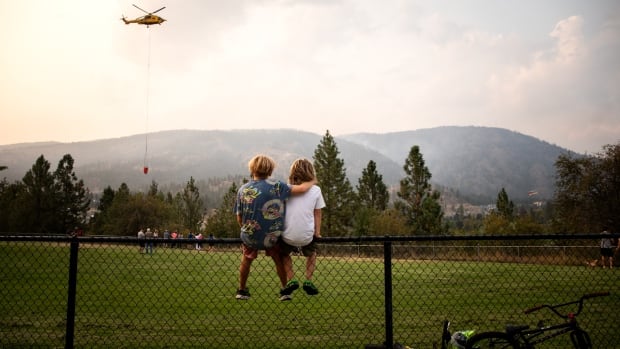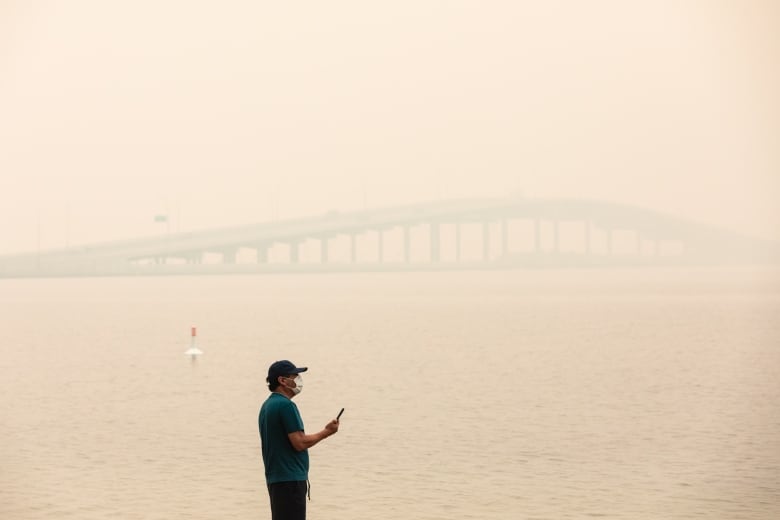
As nights become longer and the heat of summer begins to ebb, so too does the threat of lightning sparking new wildfires. But that’s prompted the B.C. government to urge residents to take care not to extend what’s been a record-breaking fire season.
Minister of Forests Bruce Ralston said at a provincial briefing on Thursday that while most wildfires over the summer months are caused by lightning, the majority of fires that start in September or beyond are caused by people.
“We ask everyone to do their part in not causing human-caused fire starts,” he said.
The warning comes amid encouraging news that two of the three wildfires making up a devastating complex that destroyed almost 200 homes around Okanagan Lake in the B.C. Interior are now under control.
While some say it’s too soon to lift the ban because of ongoing fire risk, others say recent rain has provided much needed moisture to make it safe to have a campfire again.
So far this wildfire season there have been 2,032 fires, with 417 currently active, according to the B.C. Wildfire Service (BCWS). Of the total, 1,458 were caused by lightning, 450 were caused by people and the other 124 have an unknown cause, the service says.
Academics say above-average heat, the ongoing drought across the province and increased lightning have been major contributors to the fires that have already burned more than 19,000 square kilometres across the province so far this year, with weeks or possibly even months still left to go in the season.
Minister of Forests Bruce Ralston says most wildfires in the summer are sparked by lightning, while new fire activity in September and beyond is usually because of human activity.
The BCWS says people can start fires through vehicle and engine use, industrial activities, fireworks, sky-lanterns, outdoor flames or discarding burning items such as cigarettes.
The province has lifted the campfire ban in southeastern B.C., including Cranbrook, Nelson and Trail, although Category 2 and 3 burning restrictions are still in place. Campfires remain banned in the rest of the province.
Defiant McDougall Creek fire
One of this season’s most destructive fires, the McDougall Creek blaze, continues to defy suppression efforts and is now 137 square kilometres in size, the BCWS says.
The Central Okanagan emergency operations centre says although the nearby Lake Country and Clifton-McKinley fires are now under control, evacuation alerts remain in place, and residents need to be ready to leave at short notice.
The centre is organizing bus trips for people whose homes were destroyed. It said people invited on the tours must remain on the bus during their visit.
Meanwhile, Environment Canada issued a weather advisory on Friday stretching from B.C.’s Peace River region, including Fort St. John and Dawson Creek, to Fort Nelson and areas further to the northwest such as Cassiar and Watson Lake, Yukon.
The advisory says winds from the west and southwest are likely to reach 40 kilometres an hour over the next two days, and gusts may reach 60 kilometres an hour.

Further south, wet and cool weather has helped fire crews in the southern Interior of B.C. this week, with rainfall in the Fraser Canyon and Shuswap regions, as well as Central Okanagan, helping firefighters.
On Friday afternoon, 250 properties in and around the Village of Lytton that had been threatened by the Kookipi Creek fire received the all clear, with an evacuation alert being rescinded.
Also on Friday the Regional District of Okanagan-Similkameen said that its Emergency Operations Centre had conducted aerial assessments and owners of damaged or destroyed buildings along Ashnola Road and Ewart Creek Road were beginning to be notified. It did not say how many structures were impacted.
Provincial Emergency Management Minister Bowinn Ma has extended B.C.’s state of emergency until Sept. 14 and said drought conditions may last into next year.
About 4,200 people in the province remain on evacuation orders, with another 65,000 on alert to be ready to evacuate on short notice.

